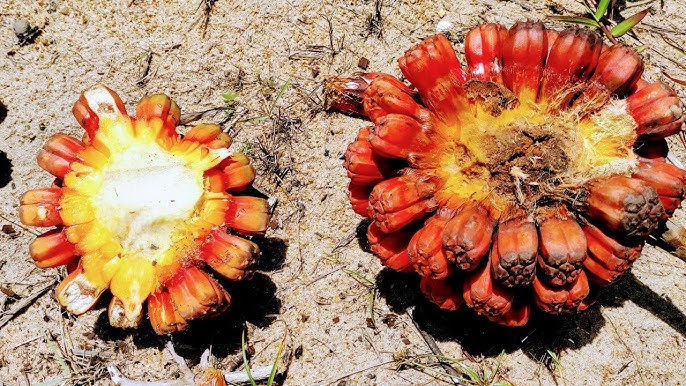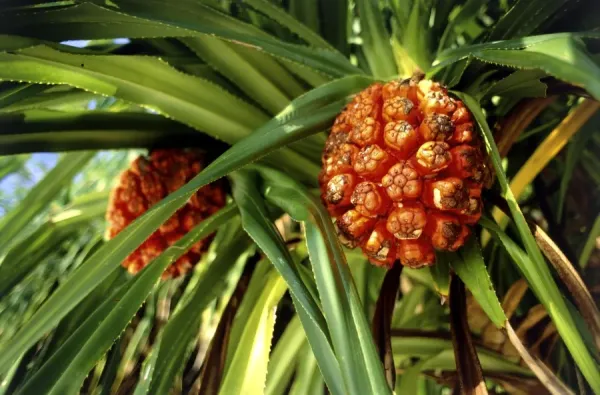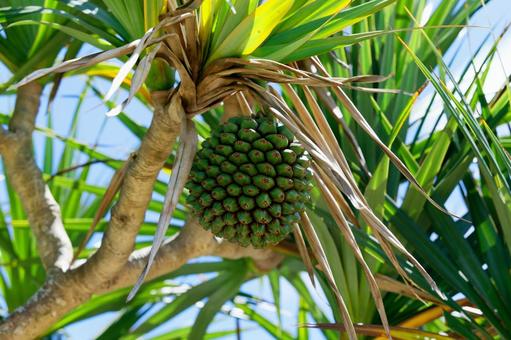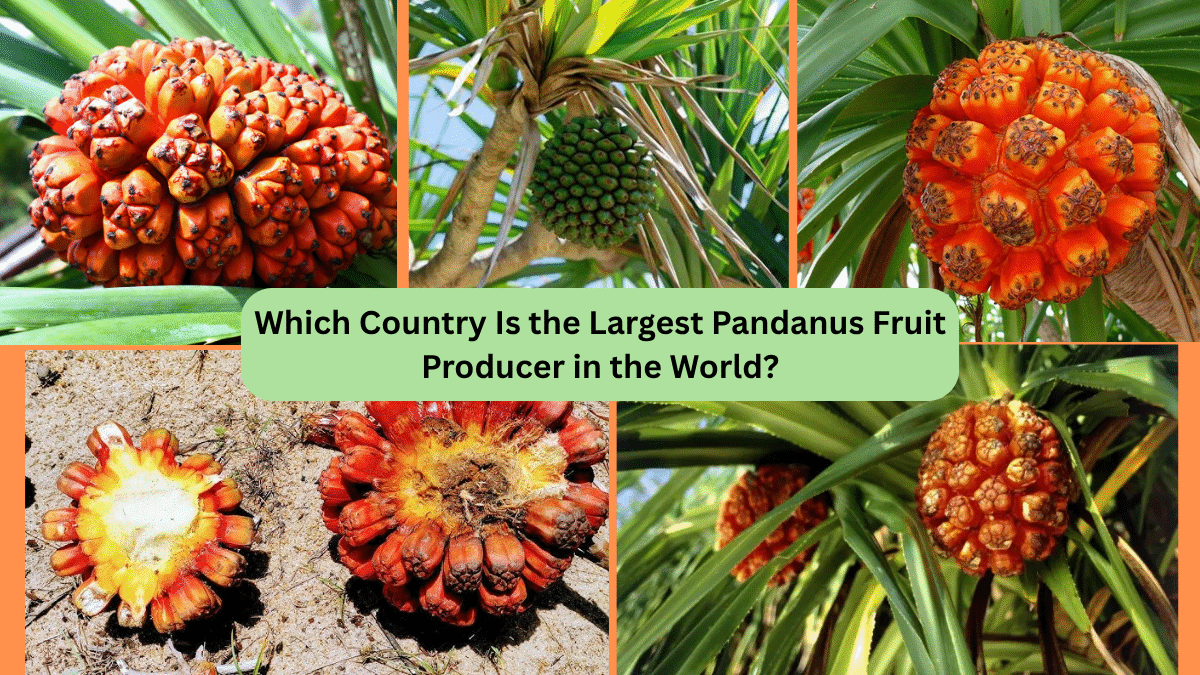The pandanus fruit, often known as screw pine fruit, is one of the most fascinating and visually striking tropical fruits in the world. Known for its bright orange to red segmented appearance and pleasant fragrance, the pandanus fruit plays a vital role in indigenous diets, traditional medicine, and cultural practices across the tropics. In this article, we’ll explore the history, uses, global production trends, and ultimately determine which country is the largest pandanus fruit producer in the world.
What Is Pandanus Fruit?

Pandanus is a genus of tropical plants, including over 700 species, with Pandanus tectorius being the most widely recognized fruit-bearing species. The plant resembles a small palm or screw pine, producing large, pineapple-like fruits that can reach up to 30 cm in length.
Each pandanus fruit is made up of multiple fleshy, wedge-shaped segments called keys or phalanges, which turn bright orange, red, or yellow when ripe. The fruit is typically consumed raw, cooked, or processed into juices and pastes.
Historical and Cultural Significance
The pandanus tree has ancient origins in Southeast Asia, Melanesia, Polynesia, and Micronesia, where it has been a staple in both daily life and ceremonial events. The fruits, leaves, and roots are used for food, weaving, medicine, and building materials.
In Pacific Island cultures, pandanus fruits are crucial for survival, providing sustenance and essential nutrients, especially in remote atoll environments.
The Largest Pandanus Fruit Producer in the World: The Philippines

The Philippines is the largest producer of pandanus fruit in the world.
Why the Philippines Leads in Pandanus Production
1. Indigenous Habitat and Ideal Climate:
The Philippines’ tropical climate, abundant rainfall, and coastal geography make it an optimal environment for pandanus growth.
2. Widespread Cultivation and Wild Growth:
Pandanus trees grow both wild and cultivated across the archipelago, especially in Bicol, Palawan, Mindoro, and Samar.
3. Culinary and Medicinal Integration:
Pandanus fruits, along with the aromatic leaves, are central to traditional Filipino cuisine, herbal medicine, and handicrafts.
4. High Domestic and Regional Demand:
The fruits are widely consumed and traded in local markets, while the leaves are essential in the making of rice cakes, sweets, and beverages.
5. Export Leadership:
Although limited, the Philippines exports pandanus leaves, processed fruit products, and handicrafts made from pandanus leaves to international markets.
Other Major Pandanus Producing Countries
While the Philippines is the leader, several other countries have significant pandanus fruit production:
Indonesia:
Native to coastal regions and small islands, Indonesia grows multiple species of pandanus for fruit, leaves, and fiber.
Fiji:
Pandanus fruits are essential in both daily diets and ceremonial feasts.
Kiribati and Tuvalu:
Rely on pandanus as a primary food source, especially on atolls with limited agriculture.
India (Andaman and Nicobar Islands):
Pandanus tectorius thrives in coastal regions, contributing to local diets and folk medicine.
Sri Lanka:
Used traditionally for weaving and occasional culinary uses.
Nutritional and Medicinal Benefits of Pandanus Fruit

Pandanus fruits are valued for their health-promoting properties:
- Rich in Carbohydrates: Provides energy, especially valuable in atoll communities.
- Vitamins and Minerals: Contains beta-carotene, calcium, iron, and potassium.
- Dietary Fiber: Supports digestion and gut health.
- Antioxidant Properties: Protects against cellular damage and inflammation.
- Traditional Medicinal Uses: Used to treat digestive issues, coughs, colds, and wounds.
Culinary and Traditional Uses
- Fresh Consumption: Eaten raw after softening the segments.
- Juices and Syrups: Processed into nutrient-rich beverages.
- Desserts and Cakes: Used in Filipino delicacies like biko pandan and pandan-infused gelatin.
- Staple Food: In Pacific islands, the fruit is mashed, fermented, or dried into cakes.
- Handicrafts: Leaves woven into mats, hats, and baskets.
- Aromatics: Leaves prized for their fragrance in rice dishes and desserts.
Economic Importance in the Philippines

Pandanus contributes significantly to both household and regional economies:
- Livelihood for Rural Communities: Harvesting, weaving, and product-making from pandanus support thousands of families.
- Tourism Products: Pandan-based delicacies and handicrafts attract tourists.
- Traditional Markets: Fruits and leaves sold in wet markets and community fairs.
- Export Potential: Growing niche demand for organic pandan extracts and woven crafts.
Challenges in Pandanus Production
- Limited Commercial Cultivation: Mostly grown wild or in small-scale farms.
- Post-Harvest Handling Issues: Perishable fruits and fragile leaves.
- Environmental Threats: Rising sea levels and typhoons threaten coastal pandanus populations.
- Market Accessibility: Remote island locations hinder market reach.
Future Prospects and Industry Trends

The pandanus industry is seeing growth opportunities due to:
- Increased Demand for Natural Flavors: Rising interest in pandan-based food and beverages.
- Eco-friendly Handicraft Movement: Expanding markets for sustainable woven products.
- Agrotourism Initiatives: Promoting farm tours and pandanus product-making workshops.
- Research on Nutraceuticals: Studies exploring pandanus fruit’s potential as a health supplement.
Conservation and Sustainable Practices
To preserve pandanus resources:
- Community Reforestation Programs: Planting pandanus trees along coasts and degraded areas.
- Organic Farming Methods: Avoiding chemical inputs.
- Sustainable Harvesting Training: Educating harvesters on non-destructive fruit and leaf collection.
- Value-Added Product Development: Encouraging pandanus-based food, beauty, and wellness products.
Conclusion
The Philippines’ natural environment, cultural integration, and wide-ranging use of the pandanus tree have established it as the largest pandanus fruit producer in the world. From local markets to tourist resorts and urban kitchens, pandanus fruits and products enrich Filipino culture and livelihoods.
While countries like Indonesia, Fiji, and Pacific Island nations maintain strong pandanus traditions, none rival the Philippines in volume, variety, and cultural impact. As global consumers continue to seek natural flavors, eco-friendly materials, and traditional wellness products, the Philippine pandanus industry holds vast promise for sustainable growth and cultural preservation.





Leave A Comment